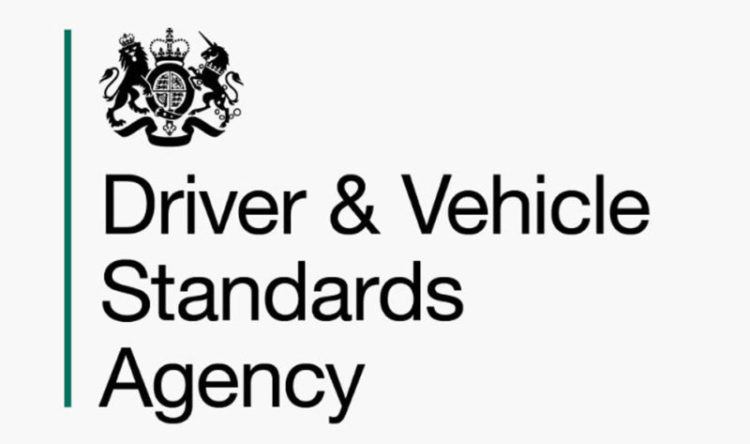Where are you going?
Beware of familiar deep voices on your sat nav
Sat Navs are commonly blamed for driving errors.
Whether it be the wrong way down one way roads, low bridge collisions, even driving down steps, drivers seems to blindly follow sat nav directions.
But does the voice choice of the sat nav directions make a subconscious difference?
Perhaps using a deeper voice could also improve results with your pupils.
Act before you think
Inspired by a recent scientific study, which found that lower voices are more trustworthy and those with less variance are the least distracting, Uswitch car insurance analysed around ten minutes worth of voice recordings for celebrities to determine who may have missed their calling as a sat nav voice actor.
| Rank | Name | Depth (Hz) | Variance | Overall score /10 |
| 1 | Morgan Freeman | 67 | 28.95 | 8.96 |
| 2 | Stephen Fry | 62 | 24.62 | 8.69 |
| 3 | Liam Neeson | 58 | 21.81 | 8.39 |
| 4 | James Earl Jones | 57 | 19.79 | 8.33 |
| 5 | Bryan Cranston | 61 | 22.04 | 8.32 |
Morgan Freeman
8.96 out of 10
Depth: 67 Hz
Variance: 28.95
At the top of the list is Morgan Freeman, renowned for his deep, calm, and authoritative voice, with a depth of 67 Hz and a variance of 28.95. Freeman’s voice is often associated with wisdom and comfort, making him a popular choice for narration and, apparently, the preferred voice for guiding drivers.
Stephen Fry
8.66 out of 10
Depth: 62 Hz
Variance: 24.62
Stephen Fry follows closely, with a slightly lower pitch at 62 Hz but a lower variance of 24.62. Fry’s iconic British accent and eloquent and articulate speech make for a distinct and engaging navigation experience.
Liam Neeson
8.39 out of 10
Depth: 58 Hz
Variance: 21.81
Liam Neeson ranks third with a voice depth of 58 Hz and a variance of 21.81. Neeson’s voice, known for its gravitas and intensity, adds an engaging and reassuring presence to any journey.
Commanding female voices
| Rank | Name | Depth (Hz) | Variance | Overall score /10 |
| 1 | Cate Blanchett | 92 | 27.42 | 6.62 |
| 2 | Theresa May | 113 | 36.20 | 6.56 |
| 3 | Oprah Winfrey | 97 | 28.83 | 6.53 |
| 4 | Helen Mirren | 127 | 37.30 | 5.92 |
| 5 | Meryl Streep | 122 | 30.86 | 5.77 |
Cate Blanchett
6.62 out of 10
Depth: 92 Hz
Variance: 27.42
With depth being one of the two factors analysed, each top-ranked voice was male, so we’ve also looked at the top female celebs. At the top of the list, Cate Blanchett leads with a voice depth of 92 Hz and a variance of 27.42. Blanchett’s voice, known for its rich, resonant quality, evidently stands out for its distinctive tone and versatility.
Theresa May
6.56 out of 10
Depth: 113 Hz
Variance: 36.20
Theresa May ranks second with a higher pitch of 113 Hz and a variance of 36.20. As a politician, May’s voice needs to command attention, demonstrating the impact of clarity and authority in sat nav voices.
Oprah Winfrey
6.53 out of 10
Depth: 97 Hz
Variance: 28.83
Oprah Winfrey is closely behind in third place, with a pitch of 97 Hz and a variance of 28.83. Winfrey’s voice is known for its warmth, empathy, and persuasive power, making her a beloved figure in the media.
Route masters
Leoni Moninska, from Uswitch, believes it can be all too easy to follow instructions blindly.
“Driving distractions can significantly increase the risk of crashes and injuries on the road. Navigation tools, including satellite navigation systems (sat navs), have transformed how we travel, offering real-time directions and traffic updates that can make journeys more efficient. However, it’s crucial to ensure that these tools are not an additional source of distraction for drivers.
“Driving distractions take many forms, from mobile phone use to adjusting the radio or eating. These distractions can divert a driver’s attention away from the road, reducing their reaction time and ability to make informed decisions quickly. A few seconds of distraction can be the difference between safety and disaster when driving.
“Using navigation tools can also be distracting if not used responsibly. Constantly looking at a sat nav screen or fiddling with its settings while moving can be just as hazardous as texting or calling. Using any navigation tool must make driving safer and not more dangerous.
Using sat navs safely
- Preparation is key: Input your destination and review your route before setting off. Familiarise yourself with major turns or exits in advance to avoid last-minute lane changes.
- Mount properly: Ensure your device is mounted in an easily visible position without needing to take your eyes off the road for more than a glance. The device should not block your view of the road and mirrors.
- Voice commands over visuals: Use voice navigation features, allowing you to focus on the road while receiving voice directions.
- Minimise distractions: Try to keep distractions in the car to a minimum. This means setting your radio or playlist before you leave, avoiding eating or intense conversations, and asking passengers to let you concentrate.
- Don’t panic over missed directions: If you miss a turn or exit, don’t panic or make sudden, unsafe manoeuvres. Trust that your sat nav will reroute you or find a safe place to pull over and reassess your route.
- Regular breaks on long journeys: Fatigue can exacerbate the effects of distractions. Plan for frequent breaks to rest and refresh on long trips, ideally every two hours or so.
- Educate yourself on features: Modern sat navs have various features to make driving safer, such as traffic updates, speed camera alerts, and lane guidance. Familiarise yourself with these features before your journey to use them without distraction.






